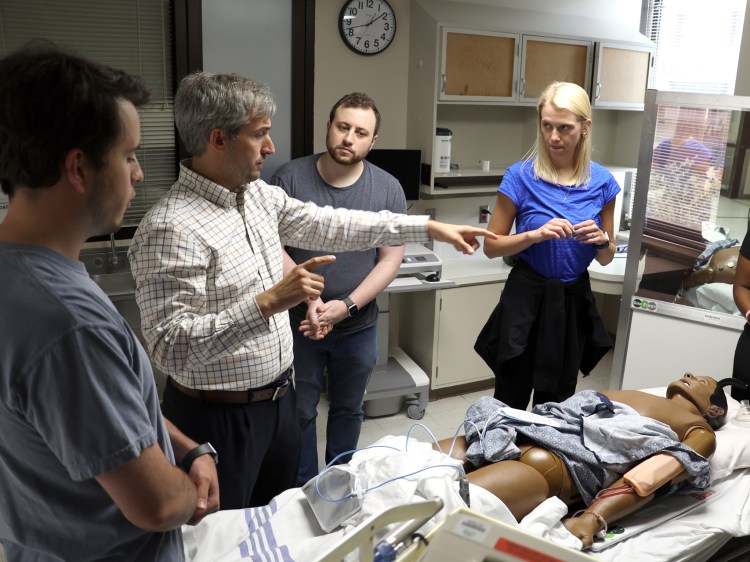Code Blue sims help prepare UAB Medicine code teams

UAB Clinical Simulation not only hones skills—it builds confidence.
Just ask one of the many interprofessional learners—including physicians, nurses and pharmacists—who participated in Code Blue simulations this past June.
Shiv Ishpujani is one of them, an incoming resident from UAB’s Graduate Medical Education program.
“This experience was fabulous,” he said. “I feel that I’ll be able to perform every role involved in a Code Blue much more confidently.”
And that, as it were, is just what the doctor ordered.
Robert Smola, M.D., assistant professor of general internal medicine in UAB’s Heersink School of Medicine, explained that residents were polled a few years ago about the clinical situations for which they felt the most unprepared, based on their medical school training.
“Uniformly, residents stated that they felt the most unprepared to lead Code Blue events,” Smola said. “To address this, we created a new Code Blue simulation session during our intern orientation (before residents start any clinical duties). After completing the simulation, residents have reported that they feel more comfortable assisting in Code Blue situations, even if it is not as the code team leader.”
Additionally, residents have reported that they have a better understanding of all the different roles of a code team and feel more comfortable performing in each if called upon to do so.
They have also reported that they have a better understanding of all the different roles of a code team and feel more comfortable performing all the roles if called upon to do so—as Ishpujani noted.
“I believe they also have a better understanding of the crash cart and how to operate an AED device,” Smola added.
GME routinely employs simulation to help learners practice and improve their clinical knowledge and skills before direct patient encounters.
“From an internal medicine perspective, simulation is most commonly utilized for ‘higher risk’ clinical simulation, such as procedural training and codes,” Smola said. “We often use simulation as an introduction or as a just-in-time refresher for the skills covered.”
To inquire about how simulation can benefit your own team or department, email simulation@uabmc.edu.
UAB Medicine’s Clinical Simulation program offers opportunities for individuals and teams across UAB Medicine and beyond to practice before they deliver care. We encourage all who provide and support patient care to “SimFirst.” Together, we can put our patients’ safety first.




0 Comments